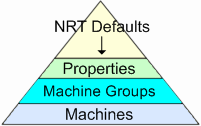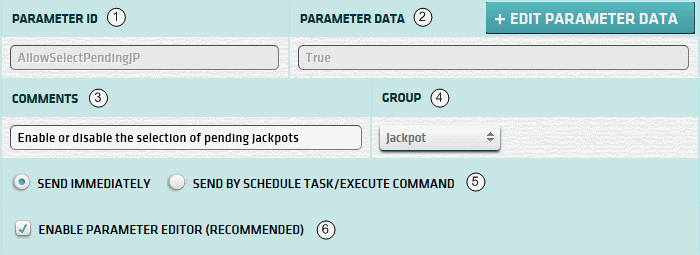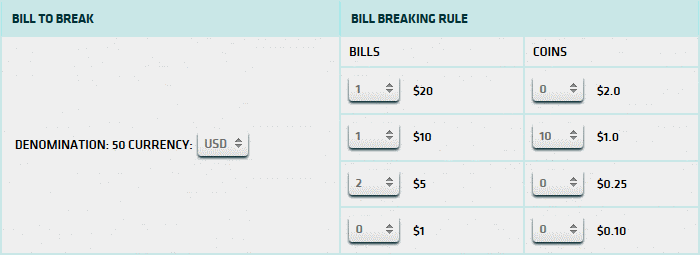<< BO Online Help >>
MONITORING
MAINTENANCE
REMOTE ADMINISTRATION
REPORT
VIEW
HELP

DATE: 2025-12-14 TIME: 13:53:35
MAINTENANCE / SYSTEM PARAMETER
| This help file covers the following topics: | |
|
|
Initially all parameters are based on the NRT defaults, which are inherited by all properties. When you update (override) a default parameter, you replace the NRT default with a "property" parameter. The only information which they share in common is the parameter ID. The parameter data, comments and parameter group can be totally different. When you delete this "property" parameter, all values (data, comments and group) revert back to the NRT defaults.

There is a hierarchy within BackOffice.
This hierarchy might best be displayed as
a triangle,
with "NRT Defaults" at the top, "Properties" next, and then Machine Groups and "Machines" at the bottom.
A property inherits the "NRT Defaults", unless it overrides a param value with a property parameter.
A machine group inherits the "Property" parameters, unless it overrides a param value with a machine group parameter.
A machine inherits the "machine group" parameters, unless it overrides a param value with a machine parameter.
| Notes: | 1. | The NRT default parameters are configured by an NRT administrator and cannot be changed. | |
| 2. | An administrator, with proper authority, can add new NRT default parameters. (read more) | ||
| 3. | At the machine level you are limited to overriding existing property parameters selected from a list. |
The update parameter page allows you to update parameter data, comments and group. You also have the option of whether to change the machine parameter settings immediately or on the next scheduled update.

| 1. Parameter ID | Parameter ID. (cannot update) |
| 2. Parameter Data | Parameter Data. (click edit parameter data button to update) |
| 3. Comments | Update the comments, as required. |
| 4. Parameter Group | Update the parameter group, as required. |
| 5. * Update Machines | Options for updating machines. (see notes below) |
| 6. + Param Editor | Check enable parameter editor. (see notes below) |
| Click edit parameter data button after enabling Parameter Editor. (see below) |
| Notes: | 1. | * Option to send parameter data to machine immediately (or) next time "parameter update" scheduled. | |
| 2. | + Param editor provides a graphical interface for selecting data, otherwise you must enter data into a textbox. |
Here's an example of editing param data using the param editor. This is bill breaking rule, so you need to break down the denomination ($50) into a set number of bills and coins.

The end result, after clicking submit, is a string of denomination * quantity pairs. The first half of the string shows the denominations in cents; the second half in dollars & cents.

| Note: * | This is a good example of why you should use the "parameter editor". If not enabled, you would need to type this string manually into a textbox to update the param data. |
For bill breaking parameters, the disable BB rule button is displayed.
| Clicking this button resets the BB rule to a quantity of zero. (e.g. USD'50*0) |
There are several reasons for disabling a bill breaking rule, rather than deleting it.
An administrator, with proper authority, can add a new parameter using BackOffice. This new parameter will be added to the NRT default parameters. This parameter will be inherited by all properties which utilize the same SQL Server database. This new parameter cannot be deleted from within BackOffice.